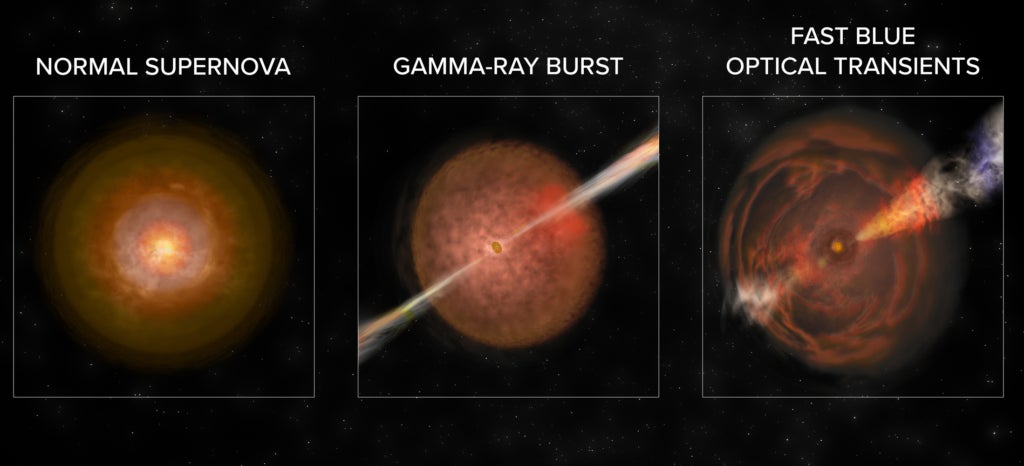Astronomers solve mystery of 'strange object' that sent unexplained blast through the universe
'There is a new beast out there'

Your support helps us to tell the story
From reproductive rights to climate change to Big Tech, The Independent is on the ground when the story is developing. Whether it's investigating the financials of Elon Musk's pro-Trump PAC or producing our latest documentary, 'The A Word', which shines a light on the American women fighting for reproductive rights, we know how important it is to parse out the facts from the messaging.
At such a critical moment in US history, we need reporters on the ground. Your donation allows us to keep sending journalists to speak to both sides of the story.
The Independent is trusted by Americans across the entire political spectrum. And unlike many other quality news outlets, we choose not to lock Americans out of our reporting and analysis with paywalls. We believe quality journalism should be available to everyone, paid for by those who can afford it.
Your support makes all the difference.Astronomers have found a new kind of explosion in the universe.
The objects – which have been classified after two years in which scientists puzzled over data because it was "so unusual" – share some characteristics with previous kinds of explosions but have important differences from those that have previously been observed, researchers say.
The discoveries began when scientists spotted an unusual blast in 2018, which showed unexpected characteristics and behaviour. The object was studied from scientists across the world who were unable to explain why it looked something like a supernova explosion but had some strange differences.
The object was incredibly bright initially, for instance, but then faded away in just a few days.
Researchers then began to look at another two blasts, from 2016 and 2018, which showed similar unusual characteristics. Researchers found themselves struggling to explain those two explosions, too.
One of the objects became so bright so quickly that the scientist studying it thought she had made a mistake. The other threw out an unexpected material through space at more than half the speed of light, leading researchers to puzzle over the discovery.
“It took almost two years to figure out what we were looking at just because it was so unusual," said Raffaella Margutti from Northwestern University, the co-author on one of a number of studies examining the new kinds of explosions.
The researchers then realised the three unexplained objects had characteristics in common and that they appeared to be a new class of explosion, different from any others. They named the phenomena Fast Blue Optical Transients, or FBOTs.

The material being thrown out of those FBOTs is some of the fastest outflows ever seen in nature. While other explosions have ejected material faster, they tend to throw out a much smaller amount of mass, and so the new explosion represents a whole new kind of extreme phenomenon.
“We thought we knew what produced the fastest outflows in nature,” said Margutti. “We thought there were only two ways to produce them – by collapsing a massive star with a gamma-ray burst or two neutron stars merging. We thought that was it.
"With this study, we are introducing a third way to launch these outflows. There is a new beast out there, and it’s able to produce the same energetic phenomenon.”
Astronomers say that the FBOTs probably begin in the same way as other dramatic supernovae and gamma-ray bursts, when a massive sun explodes at the end of its life. But it is after that explosion that the differences become clear.
Normally, a supernova sends a spherical blast of material out into space, and when a disc forms around it then it may send a gamma-ray burst across the universe, with that disc working as an "engine". The FBOTs are different because their disc is made up of thick material that was probably shed by the star just before it exploded.
As the blast hits that material, it causes the emission of bright light that first allowed scientists to see the objects.
The researchers describe their findings in new papers published in Astrophysical Journal Letters and the Astrophysical Journal.
Join our commenting forum
Join thought-provoking conversations, follow other Independent readers and see their replies
Comments